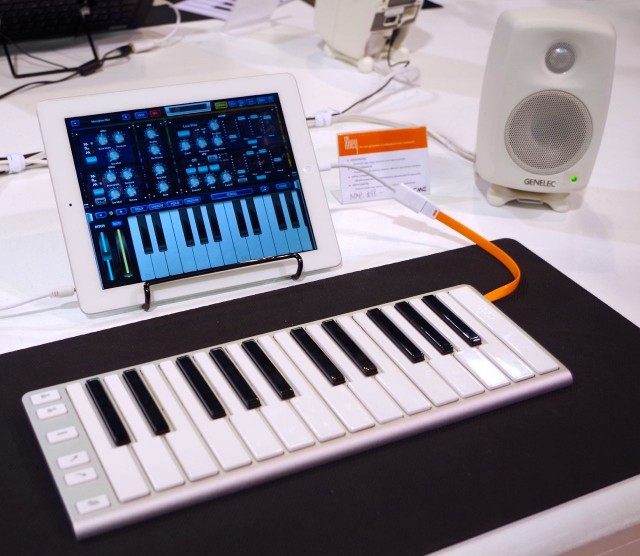2013 NAMM Show: For years, polyphonic aftertouch has been sort of a ‘holy grail’ feature on MIDI keyboard controllers, unobtainable, except for a few rare or expensive options.
Now CME is changing that, putting polyphonic aftertouch into an inexpensive slimline MIDI controller, the CME XKey.
Polyphonic Aftertouch
Polyphonic aftertouch is a great feature for synthesists, because it lets you take any note that you are playing in a chord and add expression to it. It lets you control sounds in ways that are impossible with traditional piano style keyboards.
For example, polyphonic aftertouch is one of the key features of the classic Yamaha CS-80 and is part of Vangelis’ unique approach to creating expressive symphonic electronica arrangements.
Here’s a look at the CME XKey, via sonicstate:
XKey Features:
- Ultra slim design and light design
- 25 standard size keys
- Professional velocity sensitivity and polyphonic aftertouch
- USB MIDI compliant
- PitchBend buttons with high resolution of pressure sensitivity
- Modulation button with continuous MIDI control data
- Octave +/- and Sustain buttons
- USB powered
- Firmware updatable via USB, ready for new features.
Size and Weight:
- Height: 5.31 inches (135 mm)
- Width: 15.27 inches (388 mm)
- Depth: 0.62inches (16mm)
- Weight: 1.32 pounds (600g)
We had a chance to try out the CME XKey at NAMM. While players won’t find it to be a viable alternative to a full-size controller – it is an interesting new option for synthesists and mobile musicians that want polyphonic aftertouch in a mobile controller.
The CME XKey will be priced at US $99. Availability is to be announced.


I sought this keyboard out at the show because it looked interesting. The keyboard action is absolutely awful – more or less unplayable.
If they would have done some beta with keyboard players, I expect they would have heard: “We like the keys to have more travel.” Let’s encourage CME to put that poly-aftertouch technology into a regular controller.
Lets hope this is the first of many.
If you have animoog, it think the midi addon sends polyphonic “pressure”. Rather than aftertouch, it is controlled by the location of your finger on the key. It’s much more visual than aftertouch, so I have found it easier to manage. I’ve only used the feature while controlling animoog, but I’m pretty sure you can route it to midi out to control other software or hardware.
If I’m not mistaken, poly pressure = poly aftertouch. As opposed to channel pressure/aftertouch.
it’s a start, but needs more key travel & a 3 octave version, please.
one plug in , one tablet , this keyboard and it will beat all prophet 12 !!!
Liked the line about “professional velocity sensitivity.” Sick of all these keyboards with amateur velocity sensitivity
if Polyphonic Aftertouch is available to build into a $99 controller, surely it’s coming to a full size controller near me (and you) soon!
i thought Zhao was a very charismatic chap too, certainly made me smile this morning!
– when i watched this video..
Yes!! Buying it ASAP.
Just hit the market with great reviews so far! I keep reading about qualms with the pitch bend and mod, but thats expected from buttons instead of wheels. I’m still going to get my hands on one!
You guys know most keyboards with aftertouch HAVE polyphonic aftertouch, right? Monophonic aftertouch is the cheap crappy aftertouch. Also, I really like this idea as someone who makes music but has to travel constantly; if they could (or did) get this right, I’d definitely buy; the price is right, too!
I’m sorry, sir. You are incorrect.